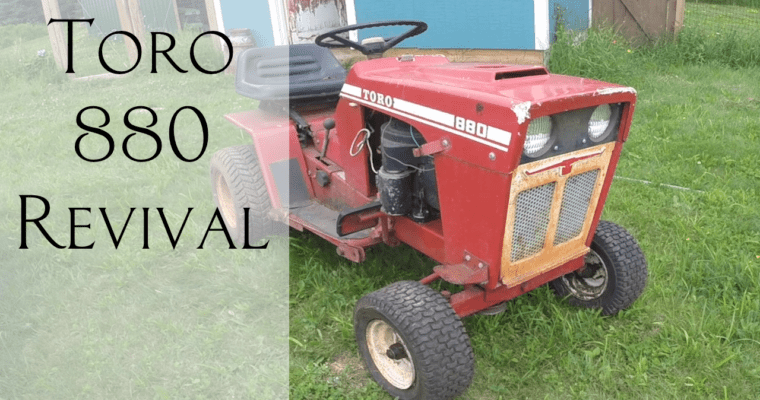I picked up this vintage Toro 880 riding lawn mower for $35. My intention is to repair it and flip it. Hopefully in the process, we’ll make a few bucks to go towards the next project!
Tools used in this video:
Normally I wouldn’t really consider a lawn mower that wasn’t running (this isn’t) for $35. Well, maybe I would. But it really depends on the symptoms of why it isn’t running. If, based on the story told by the previous owner, I suspect a carburetor issue then it’s a no brainer.
Carburetor issues are perhaps one of the most frequently encountered problems for outdoor power equipment. Many times it is as simple as cleaning the carburetor and you’ve got yourself a nice machine to flip.
However, if I’m lead to believe that the issue lies with compression or spark (indicating a possible bad coil) then I’m a little more cautious as these repairs can add up. That said, I certainly will not rule out the right machine.

So why buy it?
Because it’s cool; that’s why. No, really. I like older machines. They’re harder to find – especially in decent condition. Today’s lawn equipment is a dime a dozen. And like most things made these days, they’re disposable.
These vintage machines are much more valuable in my mind, because they are rugged and unique. Case in point, many different brands today use the same parts. If you cover up the decals, you couldn’t be sure what brand it even is. What I like about the older machines is that each brand has their own style.
So, to me this machine is worth the $35. Maybe I won’t make any money on this deal, but it will be fun nonetheless.
Diagnosis
So the story told to me is that this machine was used by the previous owner on their cabin property for ten years. Then, all of a sudden, it doesn’t have compression anymore. He also indicated that the starter is weak, so they’ve been using a pull cord to start it.
I did the basic checks – oil, fuel, compression. I didn’t even bother to check for spark because there was no compression. There was oil, and a little bit of newer fuel. The carburetor bowl was relatively clean.
In order to find the cause of the no compression, I’d have to dig a little deeper. I removed the carburetor and soaked it in my ultrasonic cleaner, and then I opened up the valve cover to check the valve springs.
I wasn’t able to find a conclusive answer there, so I removed the head cover in order to inspect the valves — and there was the problem. The exhaust valve had thrown the seat. This makes it impossible to have compression.
Valve seats can become loose mainly by overheating. There wasn’t any indication of nests from critters (a main cause of the overheating), but maybe the previous owner cleaned it out.
What’s the plan?
While I was removing parts of the machine I decided that I was going to go ahead with a more thorough restoration. I feel like in order to give this vintage machine the respect its due, a more complete restoration is warranted.
Obviously, this will involve some more expenses on my part. I had to order paint, primer, a gasket set, and various other bits and pieces. So far, my total investment is $122 (including the $35 purchase price).
I estimate that this machine in working condition (and fully restored) will fetch $250-$300. However this machine is pretty rare. It was only produced for two years, 1972-1973.
That being the case, there is the chance that this machine might be much more valuable. After it is fully restored, I will do some more research in the various forums before I go about listing. To a collector, this machine might be worth quite a bit more. Now it’s on me to do a good job.




